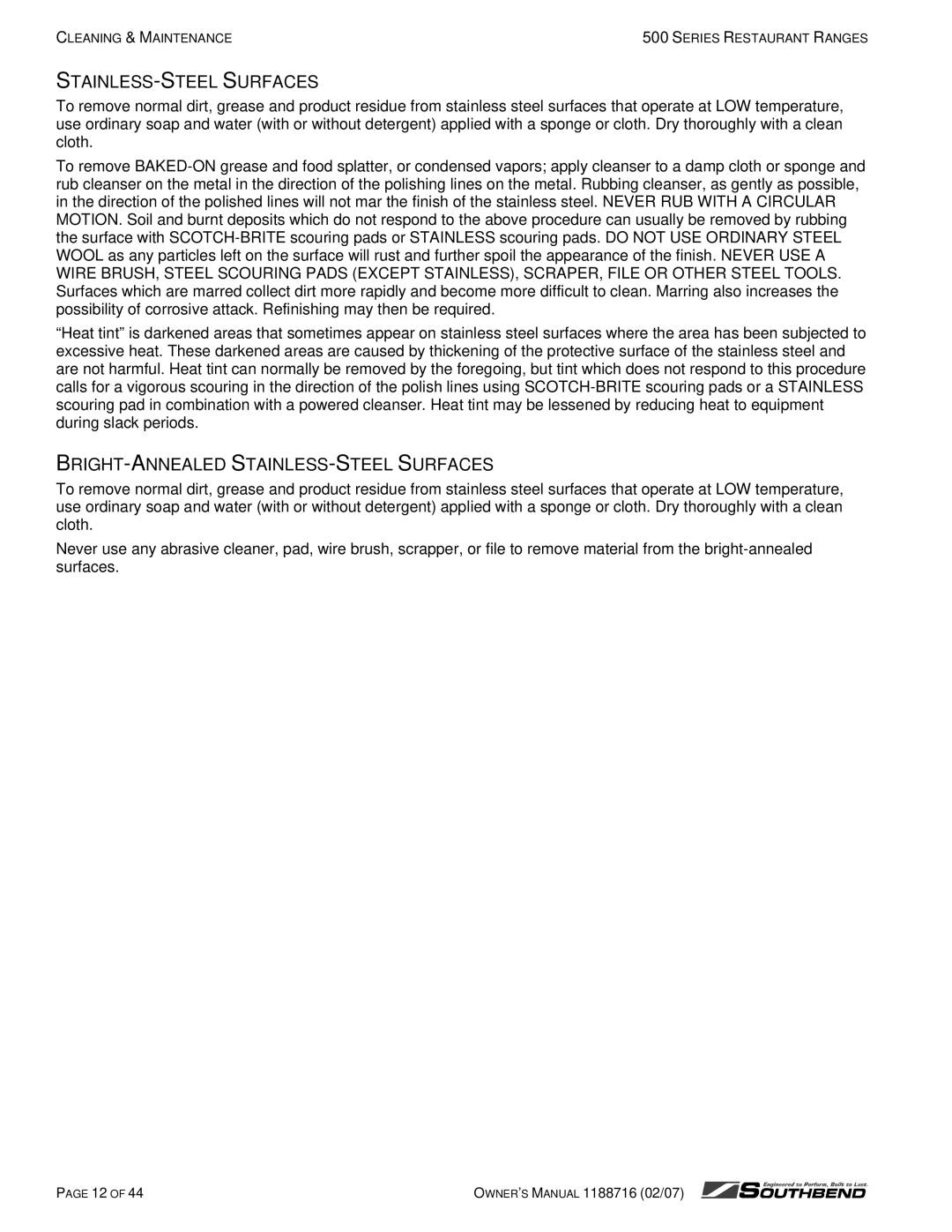X560DD S536A, S560AD, S560AA, X560AD, S536D specifications
Southbend, a well-established name in the commercial kitchen equipment industry, offers a variety of high-quality cooking appliances, including the X560AA, X536D, X536A, S560DD, and S536D models. Each of these models is designed to meet the rigorous demands of professional kitchens while delivering exceptional performance.The Southbend X560AA is a robust gas range featuring six heavy-duty burners, a large oven, and a durable stainless steel construction. Its powerful burners provide precise temperature control, making it ideal for a wide range of cooking techniques from simmering to high-heat frying. The oven is spacious enough to accommodate large trays, enabling efficient cooking of multiple items simultaneously. This model also boasts an easy-clean design, ensuring that maintenance and upkeep are hassle-free.
The X536D model is distinguished by its unique combination of an oven and a griddle, offering versatility without sacrificing quality. Equipped with a powerful charbroiler, the X536D allows chefs to prepare a variety of dishes simultaneously, making it a perfect addition to busy kitchens. Its intuitive controls facilitate quick adjustments, and the griddle's non-stick surface ensures consistent cooking results.
Similarly, the Southbend X536A combines an oven with a unique steam cooking feature, ideal for steaming vegetables and seafood while retaining essential nutrients. This model includes advanced safety mechanisms and ergonomic controls that enhance user experience. The X536A stands out for its energy efficiency, which not only reduces operational costs but also promotes environmentally friendly practices.
The S560DD and S536D are part of Southbend's heavy-duty series, designed for increased durability and performance. The S560DD features double ovens, allowing for simultaneous cooking at different temperatures, which is crucial for maximizing productivity in the kitchen. It includes high-efficiency burners that provide quick heat-up times and reduce gas consumption.
The S536D is renowned for its exceptional versatility, featuring six burners, a spacious oven, and a practical griddle top. Designed for high-output cooking, it's ideal for restaurants and catering services that require speed and efficiency. All models come with user-friendly controls, easy cleanup features, and solid construction that meet the high standards of professional chefs.
In summary, Southbend's X560AA, X536D, X536A, S560DD, and S536D models exemplify the brand's commitment to quality, innovation, and performance. Equipped with advanced technologies, these ranges are not only reliable but also adaptable to the dynamic needs of commercial kitchens, ensuring that chefs can focus on creativity and culinary excellence.
